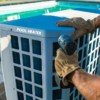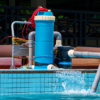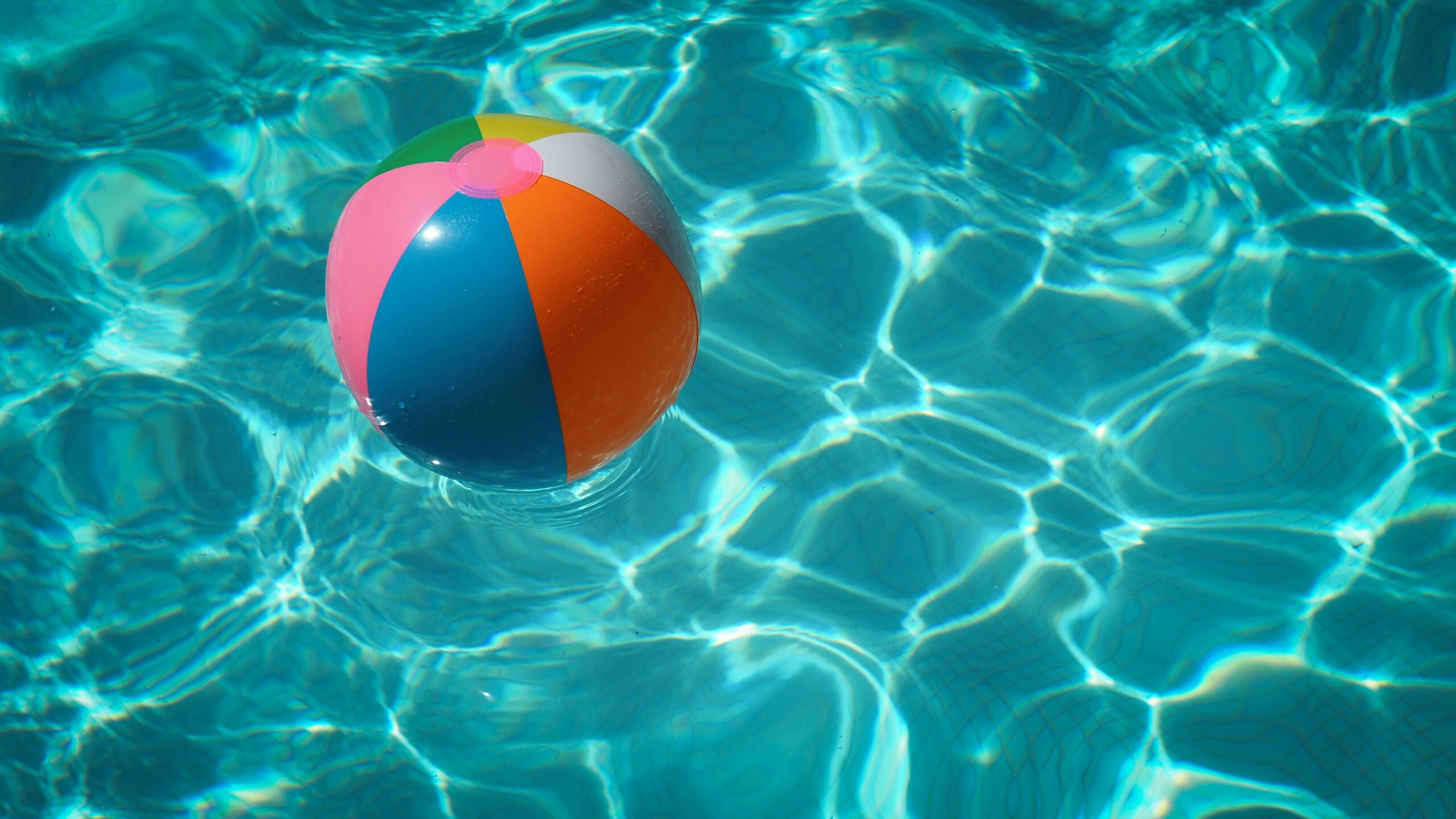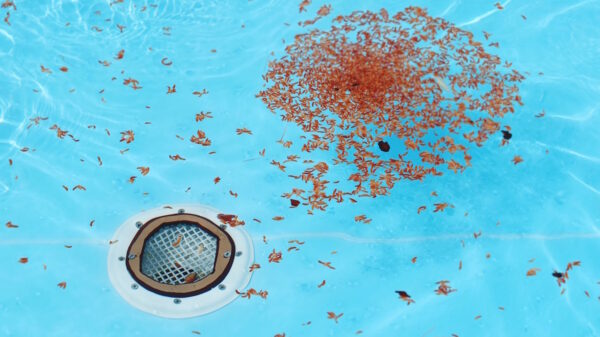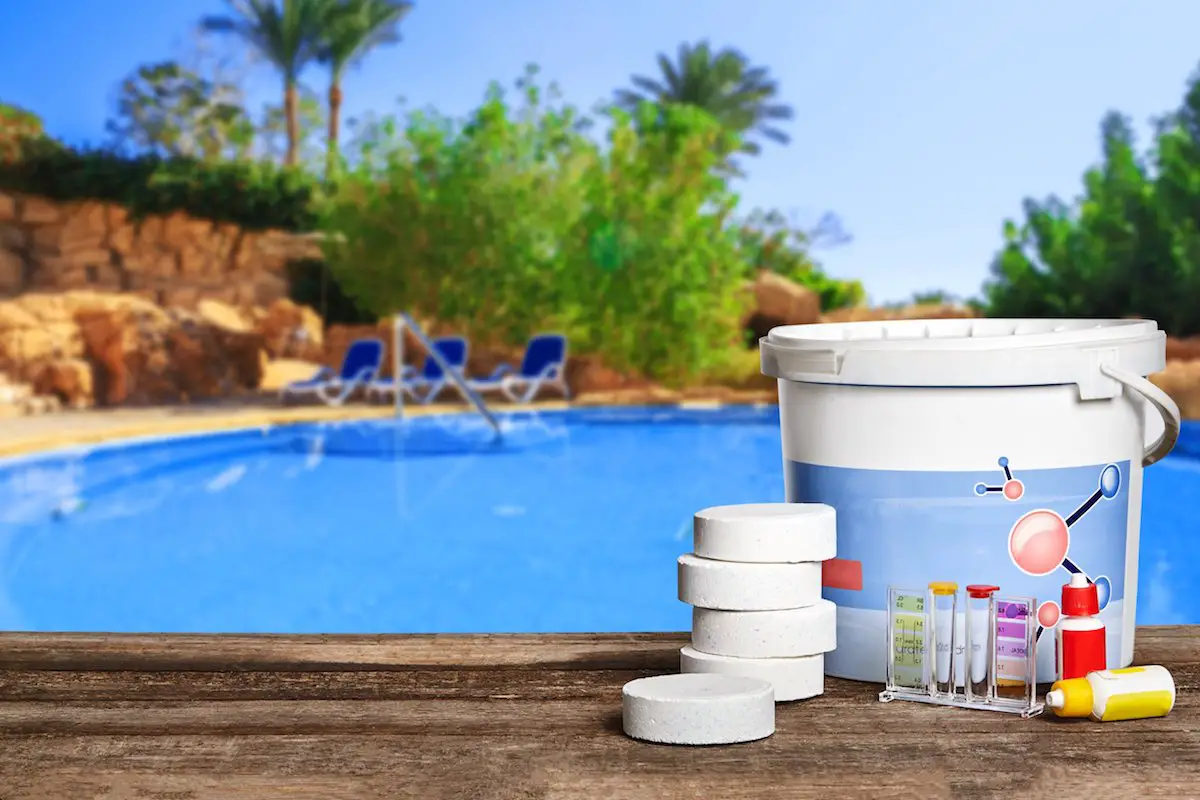8 Ways to Detect Pool Leaks
Even small leaks can suck dry your bank account by causing the pool to lose water at an excess of hundreds of gallons + per month. The amount of damage left behind by a leak can be very costly too. A hole in your liner will cause it to deflate or pop open and leave behind jagged edges that can wear your new liner quickly. Even worse is if the leak damages your skimmer, your light fixture, or your filter system.
So, what are the best ways to detect pool leaks? The key to finding a leak is looking regularly not just when you see water. These are not cheap to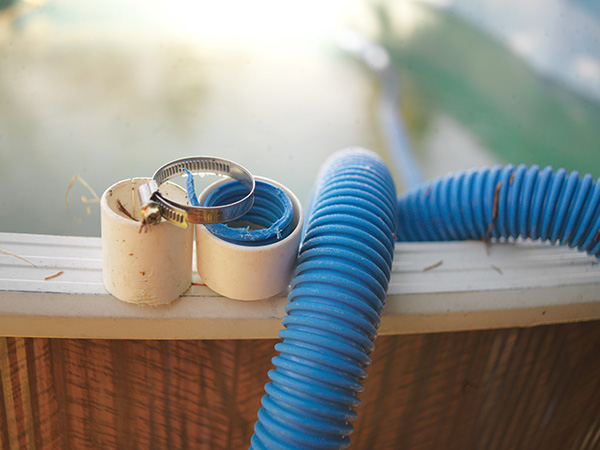 replace. However, there are many other ways to detect leaks in your above-ground pool.
replace. However, there are many other ways to detect leaks in your above-ground pool.
You need to protect both your family and the pool against this expensive damage. It is possible to protect the people in your home by testing for leaks yourself before they can get out of hand. Take some time at least once a month to run through these eight quick checks.
1. Check Your Pool Liner For Invisible Leaks
There are two types of invisible leaks you may find in your pool liner. These include:
Pinhole Leaks
A pinhole leak in the pool liner that is too small to be seen with the human eye can cause the water level to drop by as much as an inch per day.
Unseen Leaks
To inspect for unseen leaks, turn off the pool pump and allow the water to sit for a few hours so any unseen leaks have time to show themselves. While the water is still in your pool, periodically check its level against the walls of your pool.
![]()
2. Check For Leaks In The Pool Skimmer
A leak in the skimmer, especially one that’s hidden behind a loose piece of foam, can cause significant water loss over time and yet go undetected by conventional means for weeks or even months on end.
To Check Your Skimmer for Leaks:
If there’s a small drain in the bottom of your skimmer, check that it’s not loose and wiggly. If so, tighten the screw or bolt holding it to the base of your pool.
Place a garden hose into your skimmer basket to simulate rainwater entering through the usual route and watch for water appearing in the pool.
Take a look at the gaskets on each side of your skimmer lid, especially if they’re worn or torn. Small tears can cause significant water loss in your pool over time and yet go undetected for weeks or months on end.
3. Check For Leaks In The Pool Return Line
A crack or puncture in the return line, especially one that’s hidden behind a loose piece of foam or vinyl, can cause significant water loss over time and yet go undetected by conventional means for weeks or even months on end.
Check Your Returns for Leaks:
Remove your return fittings from the wall to expose the line leading into the skimmer. If your pool is equipped with two returns, remove both of them and check for water draining from the line that wouldn’t normally pass through a skimmer (the third line on some pools).
If there’s an inspection port on the side of the fitting, thread it off using an adjustable or box wrench set to fit its hexagonal shape. Examine your return line for punctures or tears anywhere along its length (including at the skimmer end) and replace it if you find any.
4. Check The Main Drain Line For Leaks
The main drain line is the most likely place you will find a leak, so inspect this first. Remove the pool’s skimmer lid and check for water on the surface of the vacuum port.
If there are no puddles around this area, use your hand or a rag to check for wetness at the base of the vacuum port. If water appears, this is an indication that there is a leak coming from the main drain line.
Main Drain Line
To look for leaks in the main drain line, use an adjustable wrench to partially unscrew the inspection port (if equipped) by its hexagonal nut. If there’s no inspection port, simply remove the cover using your fingers or another wrench set. Check inside for signs of damage; if there is any water present, there’s a good chance you’ve found the source of your leak.
5. Check The Skimmer Line For Leaks
To check your skimmer line, open the inspection port by turning it counterclockwise with an adjustable or box wrench set to its hexagonal shape. Insert a pool thermometer and make sure there’s no water in the line.
Examine the bottom, sides, and front of the line for any punctures or tears. Check for rips in the skimmer gaskets (flare fittings protect this line, so you won’t see any holes). If no puddles are surrounding it, use a rag or your hand to feel for moisture along the length of the line.
If Water Appears…
Remove the skimmer lid and use a rag or towel to check for water on its bottom lip where it meets the pool’s wall. If your hand comes up dry, move on to inspecting your skimmer’s water outlet.
Use a pair of pliers or a screwdriver to tighten the skimmer inlet connection until it’s tight enough so that when you let go of it with your hand it stays in place. If you’re using pliers, cut off any excess hose with a pair of wire cutters so the skimmer is flush with the pool wall. When you’re done, put your skimmer lid back on and move to the next step.
If tightening the connection doesn’t solve the problem, check inside for damage. A leak from here means the line is punctured somewhere along its length and should be replaced as a matter of urgency.
6. Check The Skimmer Outlet For Leaks
The skimmer outlet is the part of the skimmer where the water exits after being pushed through the skimmer’s filter cartridge. Check to see if your skimmer outlet is leaking by removing the pool’s main drain line and placing a small amount of soapy water in the funnel-shaped nozzle on top of the skimmer.
Let it sit for a few minutes and check the surface of the water for bubbles.
Check For Bubbles
If no bubbles form, there’s no leak in this area, but you should still tighten your skimmer nut as much as possible to prevent future leaks from occurring.
If bubbles do form, there’s a good chance the skimmer nut is loose. Use an adjustable wrench to tighten it until the leak stops and replace your main drain line.
7. Check Pipe Insulation For Leaks
Pipe insulation protects the water surrounding the swimming pool‘s plumbing, and it can also protect your equipment from corrosion by blocking external elements like chlorine or saltwater.
Groundwater
If you suspect that groundwater is corroding parts of your above-ground pool, check your cover for gaps or tears, especially along its seams.
If there are no visible signs of damage, inspect the insulation to see if it’s loose around any part of the pool, or if there is any damage (such as cracks or punctures) that would indicate a leak.
Heated Pool
If your pool is heated, check for signs of corrosion in all areas where pipes are insulated. If you find any damage, remove the insulation, cut out the damaged area using a utility knife and replace it with new pipe insulation (you can buy an inexpensive kit at your local hardware or retail store).
8. Inspect The Filter and Pump For Leaks
Be sure to inspect both of these areas for any leaks before going at it with a wrench. Use Teflon tape if no pool water is found around the pipe joint where your return line enters into the filter. This will protect against future problems and ensure that you don’t ruin anything valuable in case leakage occurs again.
Check For Clogged Particles
The key challenge that causes clogs on residential pools is usually small particles like sand or dirt getting trapped inside one specific area which can lead them quickly through stagnation point – eventually causing major draining issues!
Inside The Pool
Go inside your pool. You’ll see that there are at least two places where water can go in or out of the pool: One is a skimmer and another one is a drain (normally 2 way).
Before going to these areas, make sure you know what you are looking for. A leak could be in any place where water comes in or goes out. If anything sticks out, rubs together, etc… don’t touch it! It could be a sharp metal blade sticking out of a pump impeller for all you know so protect yourself first and then move forward.
Scrape away any buildup inside the skimmer to get a clear idea of whether it’s leaking or not.
![]()
In Conclusion
Even if the pool is above ground, it is still an investment. Many above-ground pools are quite costly.
Waiting can be an even more costly price than you might think. A leak can even damage property and lawns. It’s best to call a professional for help if you can’t tell where the leak is coming from on your own.




